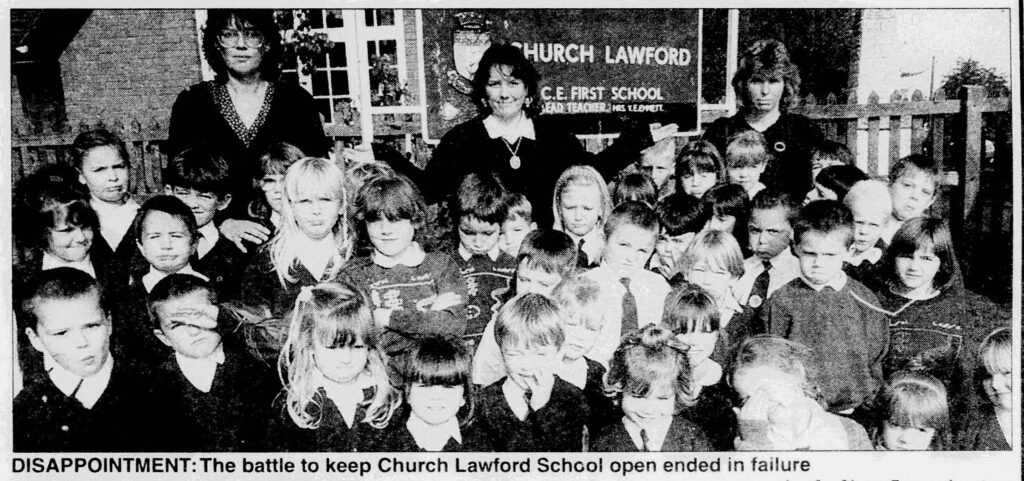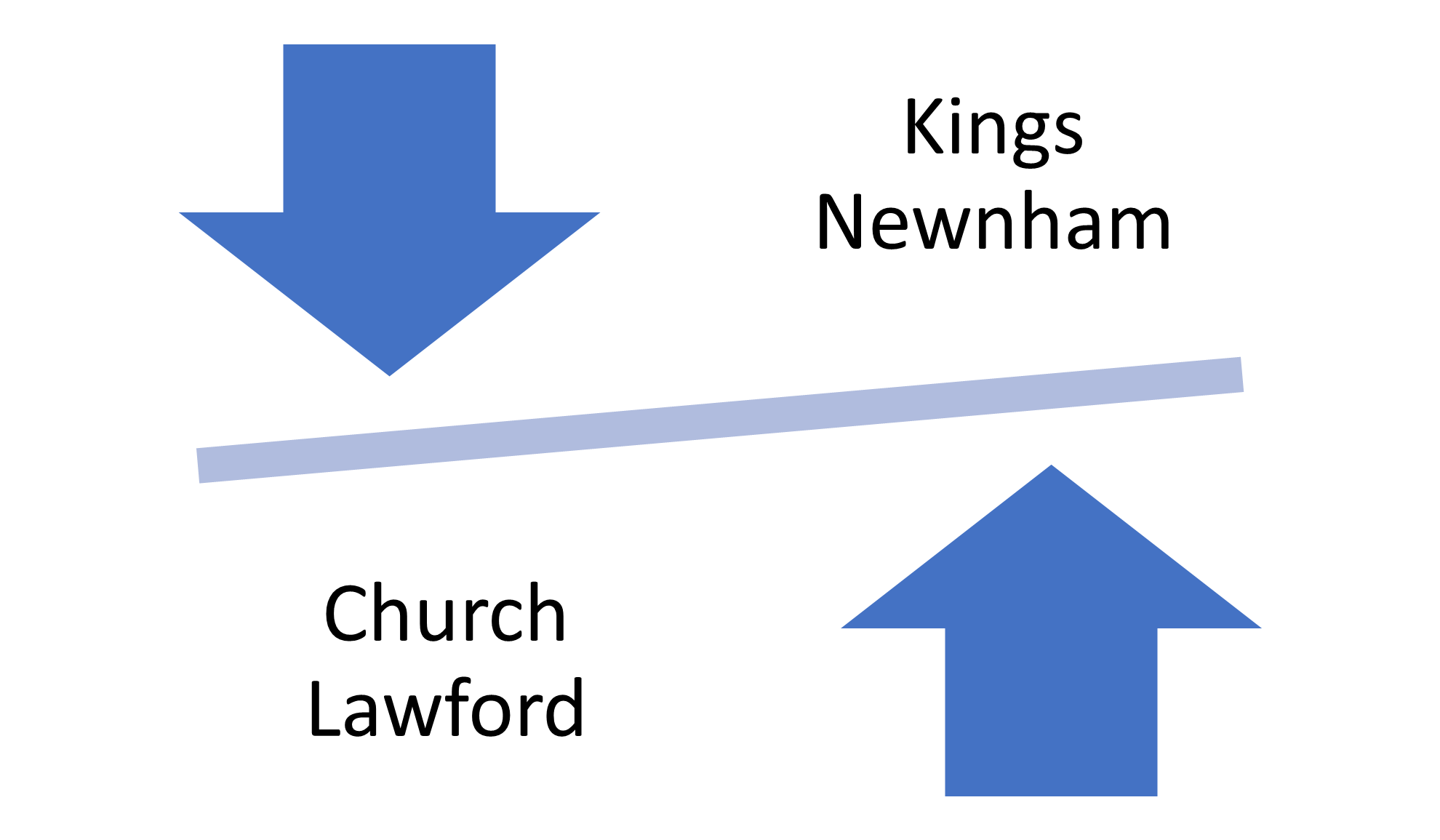After two previous campaigns to try to keep a village school for the children of Church Lawford and King’s Newnham, the village communities were called upon once again to fight to try to save their school. During 1993/4 the Local Education Authority once again set their sights on closing a village school that was such a fine example of what benefits could be brought to the children of a village community. They had plans to save costs by going back to their previous 4-11 Junior School Model, which would impact many schools – as detailed here. After initial appeals to reinstate the Junior School status failed, the School Governors applied for Grant Maintained Status, but this too was rejected at the notice of closure was enforced.
As before a campaign group was assembled, and the follies of the decision were clearly laid out, with appropriate coverage given in the local press. The Research Section of this archive has a collection of clippings from that period. During the final days of the school an exhibition was created to highlight the history of the schools (old and new) as well as the work of the children – the content from the exhibition has also been preserved in the Research Section.
Despite all of these efforts the LEA stuck to their original decision and the school closed in 1996.

During the last months of the Village School and exhibition was staged to provide memories of the past 150 years – see here for a few on the many exhibits.
A summary of those benefits was given to those that attended the final Thanksgiving Service – see here for the speech by Howard Parvin which looked back at School History and the more recent events.

Other Thoughts – and what happened next
Keith Sinfield commented on the final school closure in his series of articles for the village magazine in 2014.
In 1964 we had: a post office & shop, plant nursery, the garage, public house and a brand new school. The closure and subsequent demolition of the old school in the early 1970s gave birth to ‘The School Houses Charity’. This charity, established in 1980, disburses the income from a portion of the proceeds from the sale of land on which the old school once stood. Under the terms of the charity, those residing in our two parishes may apply for modest grants to further religious or general education.
The new school originally functioned as both infant and junior school, taking children aged 5 to 11 years. After only seven years, however, it was re-designated as a ‘First School’ and pupils’ ages then ranged from 5 to 8 years. Redesignation thus reduced pupil intake by approximately 40% and heralded a decline in the school’s fortunes. The local authority was to make various attempts to close the school. The first of these came in 1989, but was withdrawn in 1991 following vehement local apposition. The final proposal came in 1994 and, in spite of local opposition, was enacted in 1996. The buildings remained empty for a number of years after closure. During this time a small band of people from both villages formed an action group to investigate options for making good the community benefits lost by closing the village school. Purchase and renovation of the buildings was considered, but deemed too expensive. Finally, a plan to renovate/ redevelop the old Reading Room was adopted but this was later abandoned in favour of complete demolition and wholesale replacement by a new village hall. The school buildings, too, were demolished and the site sold for private housing, giving rise to the Townsend Close development (the name of which was chosen to maintain a connection with the Townsend family, benefactors of the Reading Room), Meanwhile, the action group persuaded the County Council to allow the parish council to purchase the former school sports field for use by the community for general recreational purposes.
See here for more details on the history of the schools in Church Lawford and Kings Newnham
This page, and similar more contemporary pages from the late 20th century into the 21st will be expanded and augmented with collaboration from those who were part of these events, or who witnessed them.
